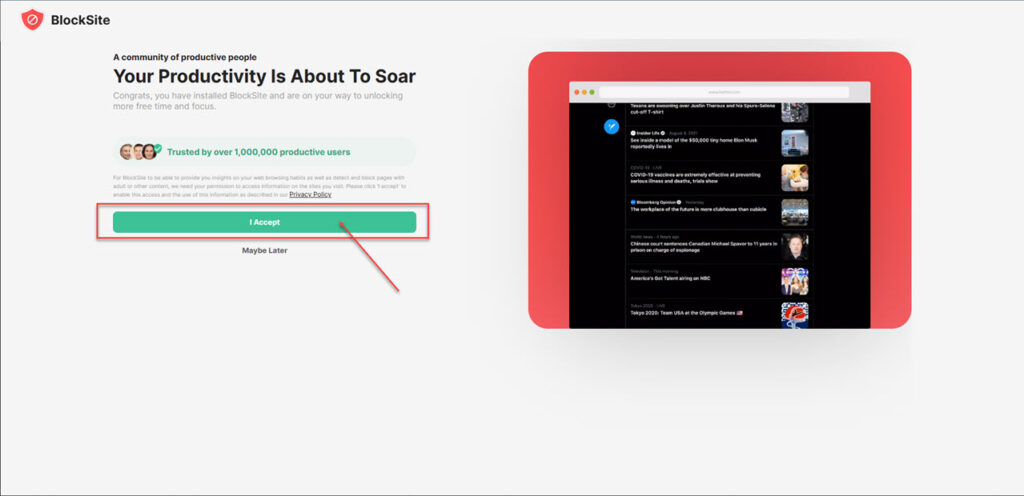Managing screen time effectively is crucial, especially for students and professionals using a Chromebook. With so many engaging apps and websites, it's easy to get sidetracked by the lure of YouTube. However, taking control of your digital habits can lead to better focus and productivity. In this post, we’ll explore some effective strategies to block YouTube on your Chromebook, helping you maintain a healthier balance between work and play.
Understanding the Need to Block YouTube

Let’s face it: YouTube is a treasure trove of entertainment, educational content, and everything in between. But with this vast library comes the risk of losing hours to endless scrolling and binge-watching. Here are a few reasons you might consider blocking YouTube on your Chromebook:
- Distraction: It's so easy to start watching a "quick" video and find yourself three hours later, having watched a series of unrelated clips.
- Productivity: Keeping YouTube accessible can hinder your ability to concentrate on tasks, especially if you need to complete assignments or work projects.
- Setting Boundaries: For students, blocking YouTube can create a healthier study environment and instill discipline when it comes to screen time.
But why stop at just blocking YouTube? Understanding the underlying reasons for your digital habits can lead to more effective strategies. Consider these factors:
- Self-Control: Recognizing how easily you can get sidetracked helps in developing better self-regulation strategies.
- Setting Goals: By blocking distracting sites, you can stay focused on your goals, whether they're academic or personal.
- Improving Mental Health: Reducing screen time can lead to better mental well-being and improved sleep patterns, which are crucial for overall health.
In summary, blocking YouTube on your Chromebook isn't just about limiting access; it's about creating an environment that fosters productivity and focus. With the right strategies in place, you can enjoy a more balanced digital life. Stay tuned for more practical tips on how to implement these changes effectively!
Also Read This: Did YouTube Add More Ads? What You Need to Know About the Changes
3. Methods to Block YouTube on a Chromebook

Managing screen time can be challenging, especially with platforms like YouTube that are designed to keep you engaged. Fortunately, there are several effective methods to block YouTube on a Chromebook. Here are some practical approaches you can consider:
- Using Parental Controls: Chromebooks come equipped with built-in parental controls that allow you to manage what content is accessible. You can set up a supervised account for your child or family member and restrict access to YouTube by adjusting the settings in the Family Link app.
- Modifying DNS Settings: Another method is to change your DNS settings. By configuring your Chromebook to use a DNS service that blocks specific websites, you can prevent access to YouTube. Services like OpenDNS allow you to block sites by adding them to your filter list.
- Editing the Hosts File: This is a more technical approach but effective for blocking sites. You can edit the hosts file on your Chromebook to redirect YouTube's URL to an invalid address. This means every time someone tries to access YouTube, they will encounter a 'page not found' error.
- Using the Chrome Browser Settings: If you prefer a simpler solution, you can also use the Chrome settings to block websites. Go to the Chrome settings, navigate to 'Privacy and Security,' and use the 'Site Settings' option to block YouTube.
These methods can significantly help you limit exposure to YouTube and promote healthier screen time habits. It's all about finding the right balance that works for you or your family!
Also Read This: Why Do YouTube Videos Play with Video Tag Interaction Muted? Explained
4. Using Chrome Extensions to Limit Access to YouTube

If you're looking for a straightforward and user-friendly way to limit access to YouTube, Chrome extensions can be your best friend. Many extensions are designed specifically to help manage your time online and block distracting sites. Here are some top picks:
- StayFocusd: This popular extension allows you to restrict the amount of time you spend on specific websites, including YouTube. You can set daily limits, and once you’ve reached your limit, YouTube will be blocked for the rest of the day.
- BlockSite: BlockSite lets you block websites easily and even comes with a scheduling option. You can specify when YouTube should be blocked, making it perfect for study hours or during family time.
- Forest: This unique extension gamifies productivity. When you want to block YouTube, you 'plant a tree.' If you stay focused and avoid distractions like YouTube, your tree will grow. It’s a fun way to encourage good habits!
- Mindful Browsing: This extension prompts you to reflect on your reasons for wanting to visit YouTube. Before you access the site, a message will pop up, asking if you’re sure about your choice, which can help curb impulsive browsing.
These extensions not only block YouTube but also encourage better online habits. Experiment with a few to find the ones that resonate with you. Remember, the goal isn't just to block distractions but to create a more mindful and productive online experience!
Also Read This: How to Favorite a YouTube Video and Create a Personalized Playlist
5. Creating a Restricted User Profile on Chromebook
If you're looking for a straightforward way to limit access to YouTube on your Chromebook, creating a restricted user profile can do wonders. This feature is especially handy for parents wanting to manage their children's screen time. Here’s how you can set it up:
- Open your Chromebook Settings: Click on the time in the bottom right corner of your screen to open the quick settings menu. Then, select the gear icon to access the Settings.
- Manage other people: On the left sidebar, look for “People” and click on it. You’ll see an option that says “Manage other people.” Click on that.
- Add a person: Here, you can add a new user. Choose “Add person,” and you will be prompted to create a new account with its own settings.
- Set up the profile: Follow the prompts to set up the new user profile. Be sure to choose a username and password that’s easy for you to remember but secure enough for your child.
- Customize restrictions: After creating the profile, you can limit access to certain apps like YouTube. Click on the new profile, go into settings, and under “Apps & Extensions,” you’ll be able to manage what can be accessed.
With a restricted user profile, your child will only have access to the apps you choose, effectively removing YouTube from the equation. This can help them focus better on their schoolwork and other productive activities without the temptation of endless videos distracting them.
Creating a restricted user profile is a simple yet effective way to regain control over your Chromebook's usage. It’s like giving your child their own mini-device where you can manage their digital experience!
Also Read This: How Much Is 40 Million Views on YouTube Worth? A Revenue Analysis
6. Utilizing Family Link for Comprehensive Screen Time Control
For parents who want a more robust solution, Google’s Family Link is a game-changer. This app allows you to supervise your child’s device usage, including blocking specific apps like YouTube. Here's a step-by-step guide on how to utilize Family Link for screen time management:
- Download the Family Link app: First, install the Family Link app on your own device. It’s available on both Android and iOS.
- Create a Family Group: Open the app and set up a family group. If your child has a Google account, you can link it here. If not, you can create one for them.
- Set device limits: Once the accounts are linked, you can set daily limits for how long your child can use their Chromebook. This can be especially useful for managing screen time effectively.
- Block or approve apps: You’ll find an option to manage apps. Here, you can see all the applications installed on your child’s Chromebook. If YouTube is there, you can block it instantly!
- Monitor activity: Family Link allows you to view how much time your child spends on different apps. This data can be invaluable in discussions about screen time and finding a balance that works for your family.
Using Family Link not only helps in blocking YouTube but also encourages open conversations about screen time with your child. You can collaboratively set goals and adjust permissions based on their needs and responsibilities.
In summary, if you're serious about managing your child's screen time effectively, utilizing Family Link is one of the best strategies available. It's comprehensive, user-friendly, and can significantly reduce the amount of time they spend on platforms like YouTube!
Also Read This: How to Update Your YouTube Profile Picture on iPads in Simple Steps
7. Monitoring and Adjusting Screen Time Settings
When it comes to managing screen time, it’s essential to regularly monitor and adjust your settings for optimal effectiveness. Chromebooks provide some built-in tools that can help you keep track of how much time you and your family members spend on YouTube and other applications. Here’s how you can do it:
- Check Activity Reports: In your Chromebook’s settings, you can find activity reports that detail how much time is spent on various sites and apps. This can be an eye-opener!
- Set Daily Limits: If you notice excessive time spent on YouTube, consider setting daily limits using family safety settings. You can restrict access after a specified amount of time.
- Use Third-Party Apps: Tools like RescueTime or StayFocusd can provide more detailed analytics and help you establish stricter boundaries. These apps often come with customizable alerts that notify you when you reach your limit.
Regularly reviewing your screen time can help you identify patterns. Are there specific times when YouTube usage spikes? Maybe the kids are using it after school or during weekends. Recognizing these trends allows you to adjust settings accordingly.
Furthermore, it’s important to involve your family in the conversation. Discuss the reasons behind limiting screen time and how it can lead to a healthier digital balance. Encourage them to share their thoughts and feelings about their screen time, fostering a supportive environment that acknowledges both the benefits and drawbacks of online activities.
As you monitor and adjust your screen time settings, keep in mind that flexibility is key. Life happens, and some days might require more screen time than others. Regularly checking in and making adjustments as necessary will help you maintain control without feeling overly restrictive.
8. Conclusion: Finding the Right Balance for Digital Wellbeing
In today’s digital age, finding the right balance between online activities and real-world interactions is essential for our overall wellbeing. Blocking YouTube on a Chromebook can be an effective strategy, but it’s just one part of a larger picture. Here are some thoughts to consider:
- Prioritize Activities: Spend time engaging in activities that promote physical health, creativity, or learning. Encourage family outings, hobbies, or reading sessions as alternatives to screen time.
- Model Behavior: If you’re looking to foster a culture of balance, set an example! Show that you also take breaks from screens and prioritize offline activities.
- Encourage Mindfulness: Teach your family about mindful usage of technology. This means being aware of how it affects mood and energy levels, and adjusting use accordingly.
Ultimately, the goal is not to eliminate screen time completely but to integrate it mindfully into your lives. Encourage open discussions about technology’s role in your family, allowing everyone to express their opinions and feelings. This approach creates a supportive atmosphere where digital wellbeing becomes a shared responsibility.
By monitoring usage, adjusting settings, and prioritizing offline activities, you can help your family find that sweet spot—where technology enhances life rather than detracts from it. Remember, it’s all about balance!
 admin
admin








